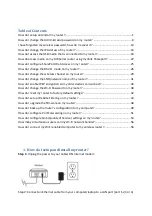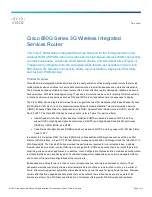
E78-864LN22S
4
1. Overview
E78-868LN22S is a standard LoraWan node module designed and manufactured
by Chengdu Ebyte Electronic Technology Co., Ltd., working frequency band
EU863~870MMHZ, supports CLASS-A/CLASS-C node type, supports ABP/OTAA
two network access modes, and at the same time, this module With a variety of
low-power modes, the external communication interface uses a standard UART. Users
can easily access the standard LoraWan network through AT commands, making it an
excellent choice for IoT applications.
1.1 main parameter
Product
model
Core IC
Size
Net weight
working
temperature
Working
humidity
Storage
temperature
E78-868LN22
S
ASR6601
26* 16*2.8 mm
2.0±0.1g
-40 ~ 85℃
10% ~ 90%
-40 ~ 125°C
1.2 Parameter Description
When designing the power supply circuit for the module, it is recommended to reserve more than 30% of the
remaining amount, and the whole machine is conducive to long-term stable operation
;
The current required for the instant of launch is large but often because the launch time is extremely short, the total
energy consumed may be smaller
;
When the customer uses an external antenna, the impedance matching degree between the antenna and the module
at different frequency points will affect the magnitude of the emission current to varying degrees;
The current consumed by the RF chip in the pure receiving state is called the receiving current. Some RF chips
with communication protocols or developers have loaded some self-developed protocols on the whole machine,
which may cause the receiving current of the test to be too large
;
The current in the purely receiving state is often mA level, and the "receiving current" of the μA level needs to be
processed by the developer through software;
The shutdown current is often much smaller than the current consumed by the power supply part of the whole
machine at no load, without being overly demanding;
Since the material itself has a certain error, a single LRC component has an error of ±0.1%. However, since a
plurality of LRC components are used in the entire RF loop, there is a case where error accumulation occurs,
resulting in a difference in emission current and reception current of different modules;
Reducing the transmit power can reduce power consumption to some extent, but reducing the transmit power
emissions for a number of reasons reduces the efficiency of the internal PA.





































